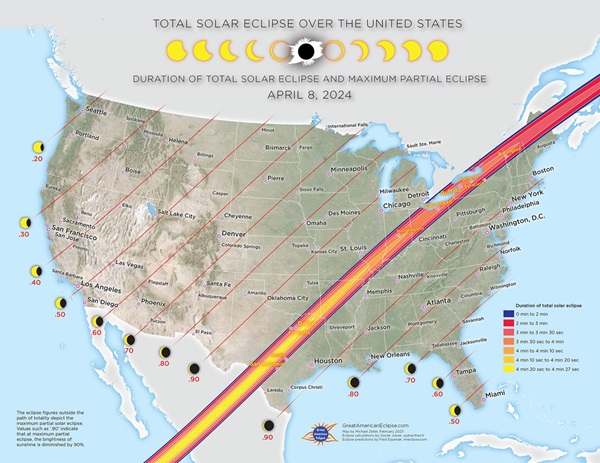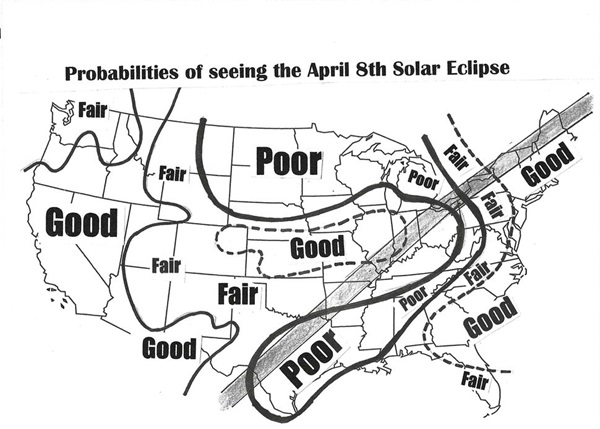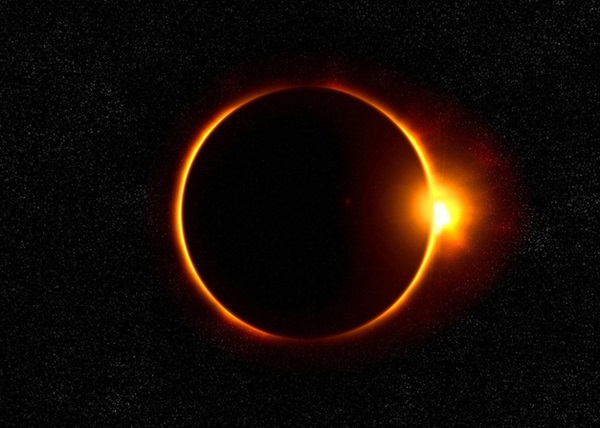BALTIMORE, MD—Marylanders are gearing up for Monday’s solar eclipse.
On April 8, 2024, a total solar eclipse will cross North America, passing over Mexico, the United States, and Canada. A total solar eclipse happens when the Moon passes between the Sun and Earth, completely blocking the face of the Sun. In the path of totality, the sky will darken as if it were dawn or dusk.
In Maryland, the eclipse will be a partial one. In Baltimore, the eclipse will begin at approximately 2:05 p.m., with the peak occurring at around 3:21 p.m. at 89.7% magnitude (the amount of the sun that will be covered). The eclipse will end in the Baltimore area at around 4:33 p.m.
The 15 lucky states that will be visited by the Moon’s shadow during the total solar eclipse are Texas, Arkansas, Oklahoma, Missouri, Tennessee, Illinois, Kentucky, Indiana, Ohio, Michigan, Pennsylvania, New York, Vermont, New Hampshire, and Maine.

The weather maps for Eclipse Day, according to Space.com, depict a ridge of high pressure extending south from New York State to the outer banks of North Carolina. Low pressure is centered over Iowa with associated frontal systems extending through central Illinois, southeast Missouri, Arkansas and into central Texas. Another area of low pressure is forecast to be over southwest Texas.
The forecast is Baltimore calls for mostly sunny skies on Monday with a slight chance for evening showers.

When watching the partial phases of the solar eclipse directly with your eyes, which happens before and after totality, you must look through safe solar viewing glasses (“eclipse glasses”) or a safe handheld solar viewer at all times. You can also use an indirect viewing method, such as a pinhole projector.
Check out more eclipse viewing safety tips here at NASA.
For those who would rather view the eclipse online, check out NASA’s livestream coverage below.
Photo via Pixabay
Do you value local journalism? Support NottinghamMD.com today.

